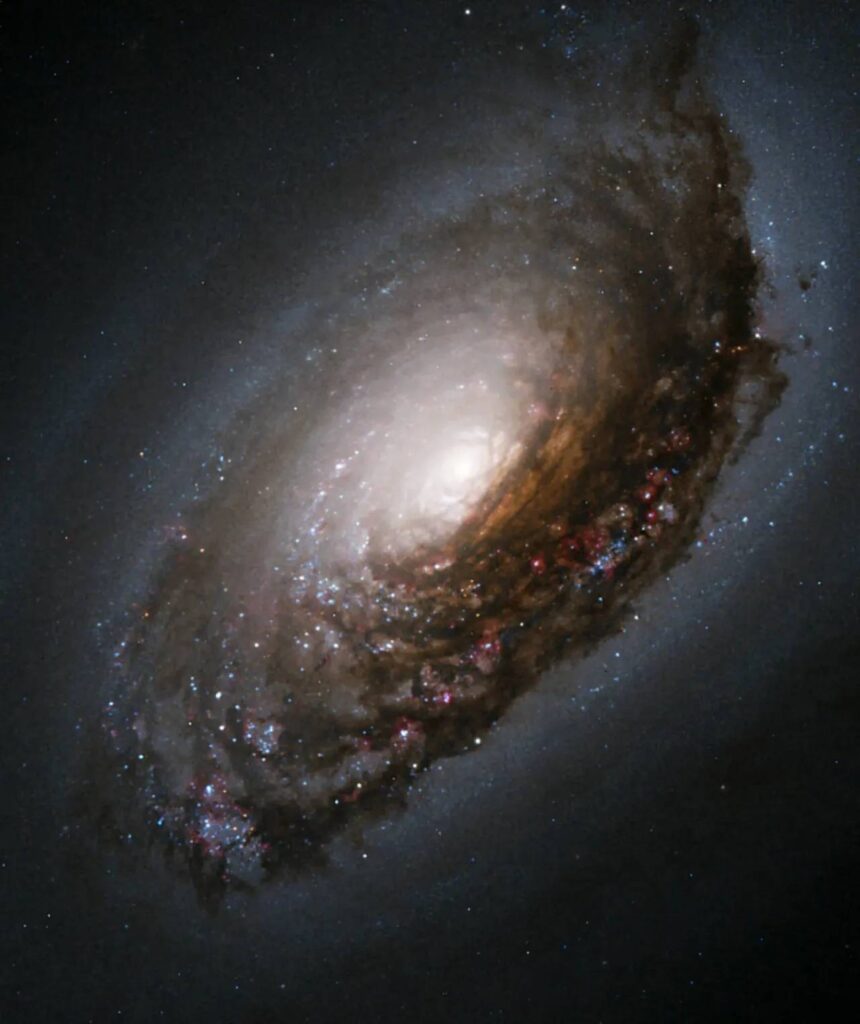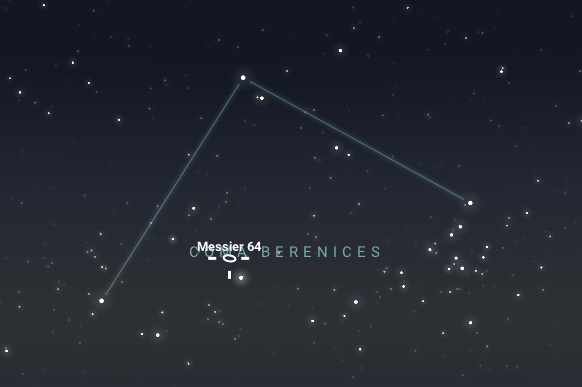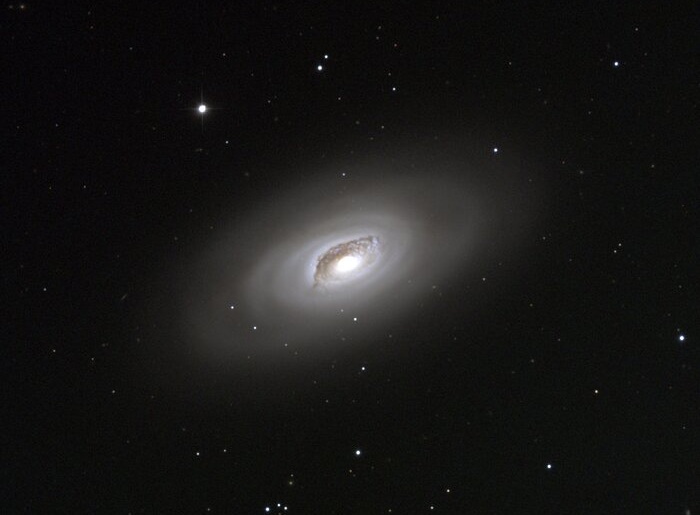M64, also known as the Black Eye Galaxy or Sleeping Beauty Galaxy, is a stunning and enigmatic spiral galaxy located in the constellation Coma Berenices. Here’s an overview of this beautiful galaxy:
Basic Characteristics
M64 is classified as a spiral galaxy with the morphological type SAB(rs)cd, indicating it has a weakly-barred (SAB) structure, a somewhat ring-like feature around the bar (rs), and loosely wound spiral arms (cd). It is located approximately 24 million light years away from Earth. It spans about 55,000 light years in diameter, making it smaller than the Milky Way galaxy.
Composition

M64 is known for its peculiar appearance, characterized by a bright central region and a dark band of dust that gives it the nickname “Black Eye Galaxy.” This dark feature is likely a result of a recent gravitational interaction or merger with a smaller galaxy. The galaxy also has prominent, asymmetric spiral arms extending from its nucleus. These arms contain regions of active star formation, visible as bright knots of young, hot stars. They contrast sharply with the dark dust lanes, creating a striking visual appearance.
The Blackeye Galaxy contains significant amounts of dust and gas, which play a crucial role in the formation of new stars. The gas and stars in the galaxy exhibit complex kinematics, likely influenced by interactions with nearby galaxies or internal processes such as bar-driven instabilities. Studies of the galaxy’s rotation curve also suggests the presence of dark matter, an invisible form of matter that exerts gravitational influence on the visible components of the galaxy.
M64 has also hosted several supernovae, including the following notable events:
SN 1923A: A Type Ia supernova observed in 1923.
SN 1957: Another Type Ia supernova observed in 1957.
There is evidence suggesting that the galaxy may host an active galactic nucleus (AGN), although it is classified as a LINER (Low-Ionization Nuclear Emission-line Region) galaxy. The presence of an AGN could contribute to the energetic processes observed in the galaxy.
Observational History
M64 was discovered by the British astronomer Edward Pigott in March 1779. It was later independently rediscovered by Johann Elert Bode in 1779 and Charles Messier in 1780, who cataloged it as the 64th entry in his famous list of non-cometary objects.
M64 has been extensively studied across various wavelengths, from radio to X-rays, revealing its complex structure and dynamics. Observations of the galaxy contribute to our understanding of the the processes of star formation and the distribution of dark matter in galaxies and its impact on their dynamics.

Observation
M64 is located in the constellation Coma Berenices, making it a prominent object in the northern sky. It is accessible for observation from both hemispheres, though it is more conveniently visible from northern latitudes. The best time to observe the galaxy is during the spring months (March to May) when Coma Berenices is well-positioned for viewing in the night sky. M64 rises in the east in the early evening hours and remains visible for much of the night.
It can be seen with both binoculars and telescopes, though the level of detail visible will vary depending on the instrument used and observing conditions. Observing from a dark site away from light pollution is necessary for viweing faint galaxies. With binoculars, M64 will appear as a faint, fuzzy patch of light. With a telescope, you may be able to discern the dark dust lane across the nucleus of M64, giving it its distinctive appearance. Larger telescopes will provide greater detail and resolution of the galaxies features.



